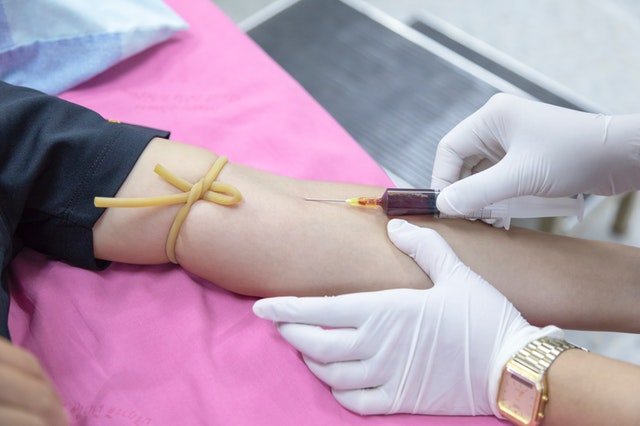Facts about Leukemia
 Leukemia is a cancer of the blood-forming cells of the body, including the system as well as the bone marrow. Kinds of leukemia exist. Some kinds of leukemia are somewhat more prevalent in kids. Other kinds of leukemia happen in adults. White blood cells are generally involved by leukemia. Your white blood cells are disease-fighters — as they are needed by the body, they grow and divide in an orderly manner. However, in people who have schizophrenia, the bone marrow produces.
Leukemia is a cancer of the blood-forming cells of the body, including the system as well as the bone marrow. Kinds of leukemia exist. Some kinds of leukemia are somewhat more prevalent in kids. Other kinds of leukemia happen in adults. White blood cells are generally involved by leukemia. Your white blood cells are disease-fighters — as they are needed by the body, they grow and divide in an orderly manner. However, in people who have schizophrenia, the bone marrow produces.
Treatment for leukemia could be complicated — based on the sort of leukemia and other facets. However, there are resources and approaches which may help make your treatment effective.
Infection
Leukemia symptoms change, based on the kind of leukemia. Symptoms and leukemia signs include:
- Fever or chills
- Persistent fatigue, fatigue
- Regular or acute illnesses
- Losing weight without even trying
- Swollen lymph nodes, enlarged liver or spleen
- Easy bleeding or bruising
- Recurrent nosebleeds
- Tiny reddish stains on the skin (petechiae)
- Excessive sweating, particularly at nighttime
- Bone pain or tenderness
When to visit a physician
If you have some symptoms or signs that worry the patient, make an appointment with your physician.
Leukemia symptoms are not certain and vague. Leukemia symptoms may be overlooked by you since they may resemble symptoms of influenza and other disorders.
Leukemia might be discovered through blood tests for another condition.
Reasons
Lymphatic system
Scientists do not understand the causes of leukemia. It appears to grow from a mixture of environmental and hereditary elements.
Just how leukemia forms
Generally, when a few blood cells get mutations that the directions leukemia is supposed to happen. There can be changes in the tissues which have yet to be understood that may bring about leukemia.
Membranes cause the cell to grow and divide and to keep on when cells will die alive. As time passes, these cells may crowd out healthy blood cells from the bone marrow, leading to white blood cells, including red blood cells, and platelets, resulting in symptoms and the signs of leukemia.
How leukemia is categorized
Leukemia is classified by doctors according to the kind of cells and its rate of development.
Fast leukemia progresses, the kind of classification is:
- Intense leukemia. In acute leukemia, the abnormal blood cells are immature blood cells (blasts). They can not take out their roles, so the disease dissipates and they grow quickly. Therapy is required by leukemia.
- Terrible leukemia. There are lots of sorts of chronic leukemias. Some create few cells and a few trigger too cells. Leukemia entails cells. All these blood cells may operate for a time period and replicate collect slowly. No symptoms are produced by some kinds of leukemia and may go unnoticed or undiagnosed.
The Second Kind of classification is by kind of blood cell
- Lymphocytic leukemia. This kind of leukemia impacts the stem cells (lymphocytes), which type lymph or lymph tissue. Your system is made up of tissue.
- Myelogenous (my-uh-LOHJ-uh-nus) leukemia. This kind of leukemia affects the myeloid cells. Cells contribute to white blood cells, blood cells, also cells.
Kinds of Leukemia
The Kinds of leukemia are:
- Acute lymphocytic leukemia (ALL). This really is the most common type of leukemia in young kids. ALL may also occur in older adults.
- Acute myelogenous leukemia (AML). AML is also a frequent kind of leukemia. It happens in adults and children. AML is the most common sort of leukemia in adults.
- Chronic lymphocytic leukemia (CLL). With CLL, the most frequent chronic mature leukemia, you might feel well for a long time without needing therapy.
- Chronic myelogenous leukemia (CML). This kind of leukemia primarily affects adults. Someone who has CML might have no or few symptoms for years or weeks prior to entering a stage where the leukemia cells develop.
Additional forms. Other, rarer kinds of leukemia exist, such as hairy cell leukemia, myelodysplastic syndromes, and myeloproliferative disorders.
Risk factors
Include:
- Past cancer therapy. People who have had certain kinds of chemotherapy and radiation treatment for other cancers have a higher probability of developing specific kinds of leukemia.
- Genetic ailments. Genetic abnormalities appear to play a part in the evolution of leukemia. Certain disorders, such as arthritis, are all associated with a greater risk of leukemia.
- Exposure to specific substances. Exposure to specific substances, like benzene — that can be found in gas and is utilized by the chemical sector — is connected to an increased chance of several sorts of leukemia.
- Smoking. Smoking cigarettes increases the risk of acute myelogenous leukemia.
- Family background of leukemia. When members of the family have been diagnosed with leukemia, then your risk of this disease could possibly be raised.
But most individuals who have known risk factors do not get leukemia. And individuals who have leukemia have none of the risk factors.

